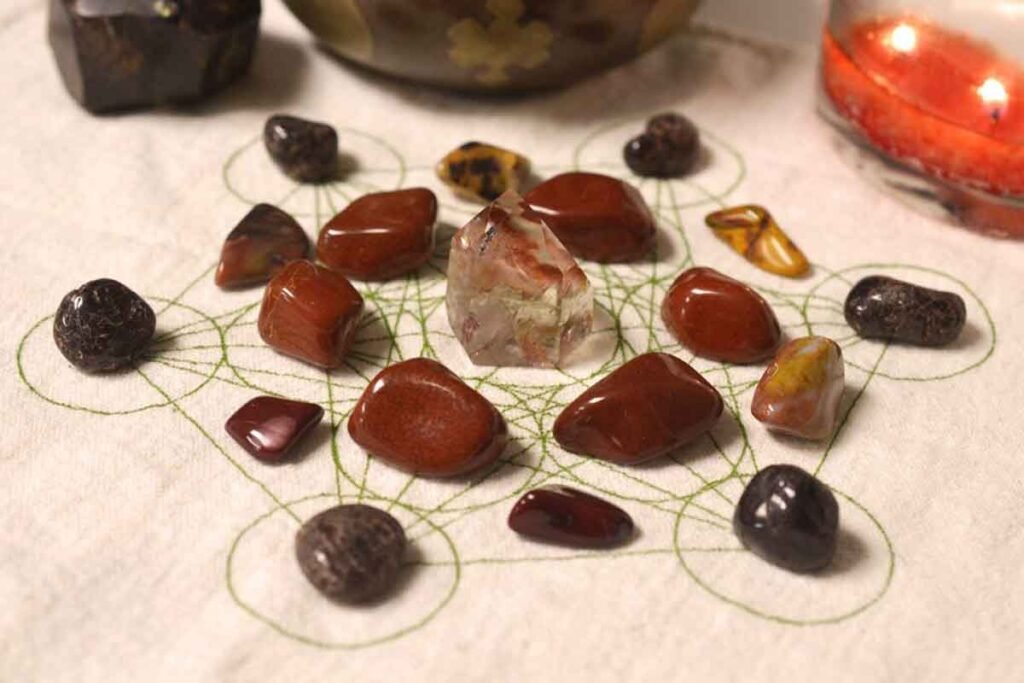What if someone suddenly asks you if you know anything about the top red gemstones. Of course, your reply maybe something like this, “Are you kidding me? How would I know?”
Your answer would not be unexpected. After all, except for the ruby, not many people know of other red gemstones, much more the top ones. In fact, even seasoned jewelers may know only a few, not all. It’s because these are very rare and a typical jeweler may not have had the chance to work on them. For example, of the 24 known varieties of red stone, only a few have earned a spot at the top of the class.
This article is going to take you out of your dilemma so next time you are asked you will be ready with an answer.
How Much Do You Know About the Top Red Gemstones
Which gemstones are red? All of these gemstones are red—no doubt about that. Their “redness,” however, may vary depending on the minerals that comprise them. Some may have impurities that augment, not diminish, their attractiveness. But they all belong to the same color-classification and the top of their genre.
So, what stone is the red stone? These are the top choices of jewelers based on their extraordinary and exquisite beauty as a jewelry item—if they are available:
Red Diamond
Red diamonds are the rarest of all colored diamonds—rarer than pink diamonds. It is so rare that only very few exist. And rarity affects its value. For example, in 1987, the Hancock Red, the first gem-quality red diamond auctioned off was bought for $936,000/carat, making it the most precious red stone in the world.
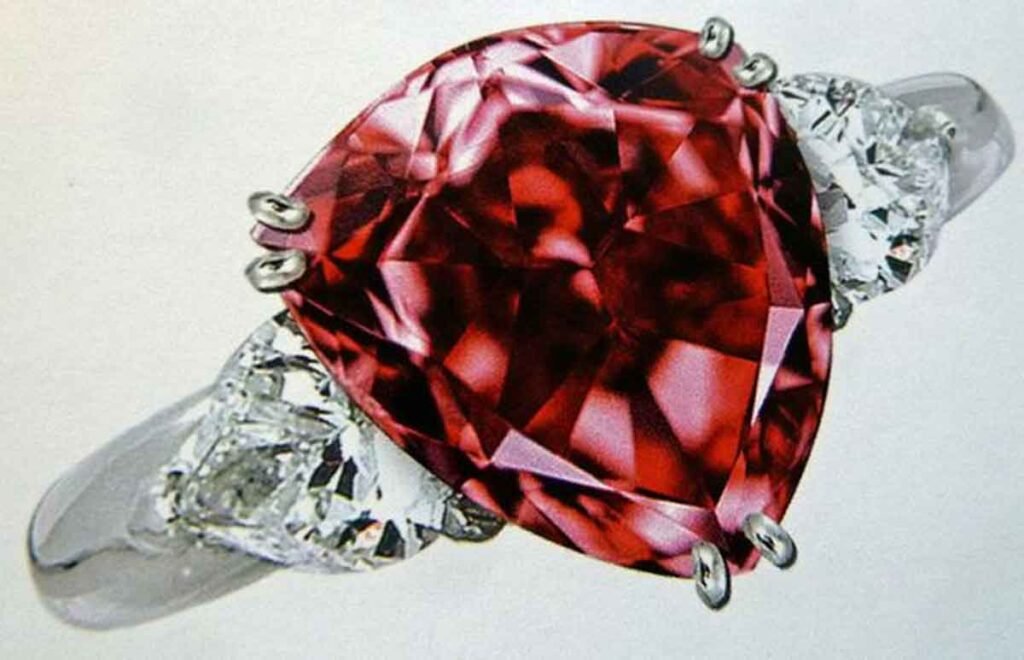
Just like diamonds, such as the one in this David Yurman review, colored diamonds get their fancy colors from impurities like nitrogen and boron. But red diamonds are pure carbon—zero impurities. They get their redness due to deformities in their lattice structure. When light passes through, it bends in a way that only the red color of the light spectrum is reflected.
To answer the question “What is precious red stone?” Though there are plenty of diamond mines all over the world, red diamonds can only be found in a select few like Australia, Russia, Brazil, and India. Thus, contributing to their rarity.
Garnet
Garnet is not a single-mineral gem but is composed of several closely related minerals. Hence, it comes in different colors. But the most widely-known color of garnet is red. So when the term “garnet” is used, what is referred to is this member of the dark red gemstones.
Red garnets are often confused with rubies. The easiest way to spot the difference is the color. Garnets are deep red, while rubies tend to be on the lighter side. Garnets are also less expensive than rubies.
These stones are often eye-clean, meaning they don’t have visible impurities. On the downside, they are soft and prone to getting scratched or damaged.
Tourmaline (Rubellite)
Rubellite tourmaline is one of the members of the multi-colored tourmaline family of boron silicated minerals. But its pinkish-red color variety is the most popular among its siblings—and also the reason it is often called rubellite.
The word “tourmaline” comes from the ancient Sinhalese word, turmali, meaning a mixed color precious stone.
As a gemstone, it is often free of inclusions, thus giving it very high clarity. Its vitreous luster interacts beautifully with light. As a jewelry piece, it is often faceted to maximize light reflection. They are tough gemstones and can stand normal wear and tear.
Red Zircon
Red zircon is a natural, red-colored semi-precious stone of the nesosilicate family of minerals. Its name is derived from the Persian word zargun, meaning golden-hued.
They are often rare and come in vivid red with purple or orange secondary tints.
The beauty and brilliance of this gemstone, and its affordability, have made it more popular among other gemstones of the same price range.
Red zircon jewelry pieces, however, need careful handling. They are not very hard and can easily get scratched or damaged.
When buying red zircon—either as a piece of jewelry or a gem—be careful not to be taken in by the term “cubic zirconia.” Though it may be made to look like a red zircon, it is not.
Ruby
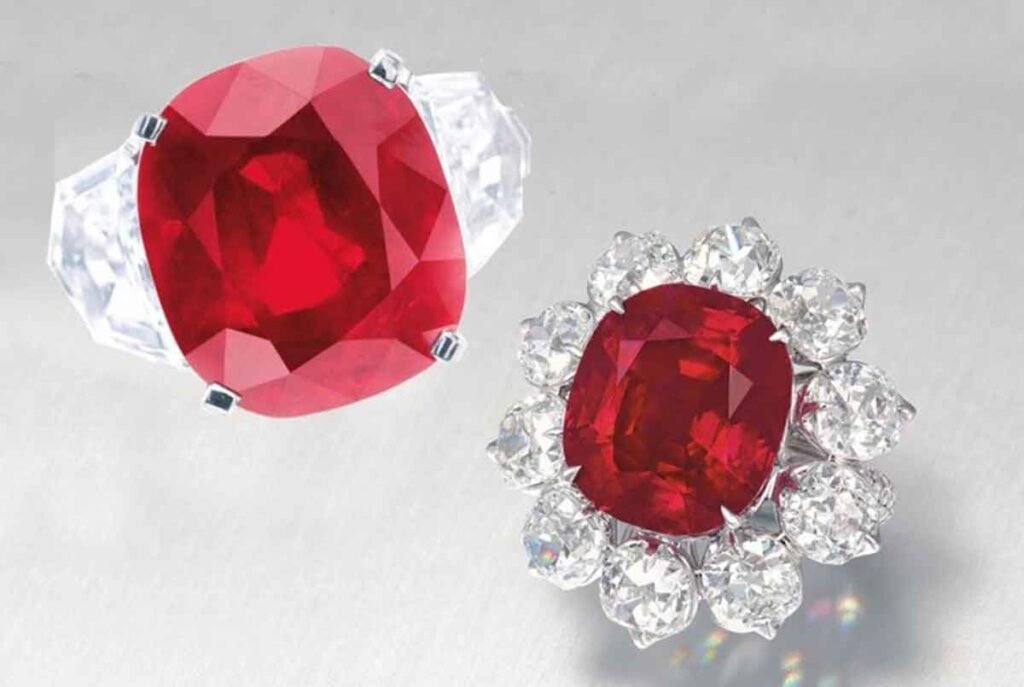
Ruby is a variety of the mineral corundum with traces of chromium, which gives it a reddish color. Its color ranges from red-orange to purplish red. But the most sought-after is the pigeon blood ruby.
Among the red stones, ruby always symbolizes the red stone.
It is the most famous and fabled gemstone and is the favorite of jewelers to work on because of its hardness, durability, and luster. However, it is also very rare. especially the transparent variety. They are rarer than diamonds.
Burma is the chief source of rubies and Burmese rubies are also the finest. Again, they are very rare. In fact, most of the rubies in the market are either synthetic or heat-treated to increase their gloss.
Red Agate
Red agate is a rock containing cryptocrystalline silica, microgranular quartz, and chalcedony. It comes in three different colors: red, brown and black.
Pure red agate is quite rare (pure red agates are usually dyed). When there is, it always comes with layers of white or grey bands, which increase its appeal.
Agates, including the reds, have a beautiful, smooth sheen and waxy luster. It can either be translucent or opaque. The gem is very durable and can be worn on all occasions.
It is a very affordable stone but the workmanship and settings make it a bit more expensive. Most red agate jewelry pieces are in the cabochon cut, emphasizing its sheen and luster.
Red Spinel
Red spinel is one of the most popular gemstones around. In the past, it was mistaken as a ruby. They look identical and found in the same localities. Not until the late 19th century when methods of classifying gemstones were established that both were put in their proper gem categories.
Spinel comes in a variety of colors. But pure spinel is colorless. However, impurities in the stone give it a variety of colors.
Fine red spinel is rarer than rubies but market forces rate them 30% lower in value than a ruby of the same carat size.
Red spinel is often free of inclusions and, as a piece of jewelry, has high levels of clarity. It is transparent with a very high refractive index, making them look so brilliant. And they are very durable.
Red Topaz
This gem belongs to the nesosilicate family of minerals. As a stone, topaz comes in a wide array of colors, i.e., pale yellow, greenish-blue, honey-yellow, pink, and red. Of all the hues, red—the wine-red, is the rarest. Some gemologists even think there isn’t anything available anymore.

Like most gemstones, the deeper the color, the more valuable it is. And very rare, too. It has a vitreous luster and is brilliant when faceted. A blazing red topaz is dazzling and vibrant in color. Not only that, topaz is also believed as a gemstone that brings good luck.
Because of its rarity, most of the red topaz jewelry items available in the market are processed gemstones. They are not natural red topaz.
Red Beryl (Bixbite)
Beryl is a mineral composed of beryllium aluminum silicate. Of late, it has earned the interest of gemologists because some of its color hues and varieties are gem-quality. Good examples are the well-known aquamarine and emerald.
Red beryl, also known as Bixbite and Red Emerald, is an ideal gem for the emerald cut. It came into the jewelry world in the mid 20th century. This pinkish-red stone is very, very rare and those found seldom exceed 1 carat. As a jewelry piece, red beryl, is purely a collector’s item.
Red Jasper
Jasper is an aggregate of microgranular quartz, chalcedony, and other minerals. It is an opaque variety of silica and comes in a variety of colors, like yellow, brown, green, and red. Of these, red is the most common.
Red jaspers come with spots and patterns on the surface. As a jewelry piece, it’s kind of unique chic, and arty.
Most of the red jaspers in the market are not treated, hence they come in their natural colors. The downside of red jaspers is that they are soft and can chip or break if given a hard blow. They are affordable. The most common cut of red jasper is the cabochon. This brings out its smoothness and gloss.
Carnelian (a.k.a. Cornelian)
Carnelian, also known as Cornelian, is a variety of the mineral chalcedony with colloidally dispersed iron oxides making it appear red (reddish-brown).
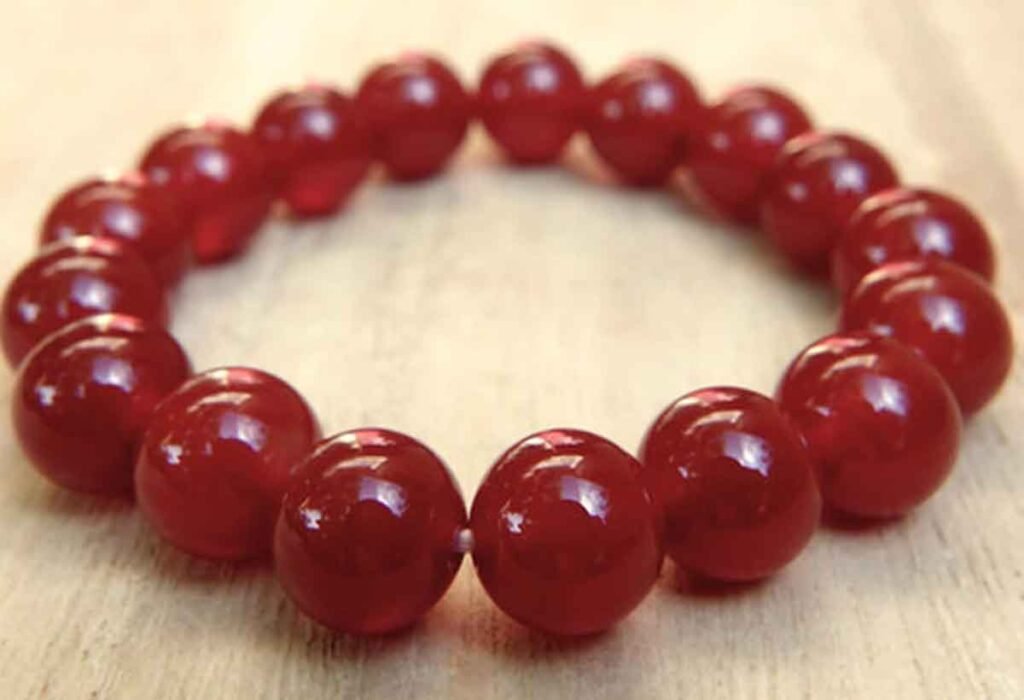
Carnelian has been used as a gemstone in ancient times and was highly valued in the past. Due to a vast array of gemstone competition these days, its demand and value have diminished—but not totally wiped out.
If done well, carnelian’s glassy luster can give a jewelry piece a charming vintage-look if set in tarnished sterling silver, just like the one in this Tiffany & Co. review.
It is a tough stone and is perfect for everyday wear.
Red Rhodolite Garnet
Garnets are metamorphic rocks associated with other minerals such as mica, staurolite, kyanite, and sillimanite. Red rhodolite garnet is a variety of garnet that is a rose-pink to red in color. It is the rarest of the garnet family of gemstones.
It comes in different shades of red, often dark, with no visible signs of inclusions. As a jewelry piece, rhodolite has a high brilliance that is eye-catching when done in a faceted cut. And they are always untreated so what you get is the natural and real one.
Rhodolite is used on all types of jewelry, including rings.
What is the Rarest Gemstone 2020?
Gemstones are always rare. If they were not rare and can be picked up on a side street on your way to work, then they are not gems but pebbles. Unfit for any form of jewelry but a living room decoration or a dining table’s centerpiece.
Other than its beauty as a jewelry piece, rarity is a hallmark of gems. It is one of the determining factors of gem’s value and price in the market. Assuming all things being equal, a more rare gemstone will be more expensive than one that is not.
Given that the lockdown due to the COVID-19 last year has affected the supply chain of everything—including gemstones—it was not a factor in their rarity.
Remember that a single piece of gemstone takes a long journey from being dug out of the bowels of the earth to a jeweler’s workbench. So they are always rare. But, here’s the big but! In 2020, some gems are rarer than others. In fact, they are the rarest—regardless of year. The following are some of the rarest red gem names:
- Tanzanite
- Black Opal
- Larimar
- Paraiba Tourmaline
- Grandiderite
- Alexandrite
- Benitoite
- Painite
- Red Beryl
- Taaffeite
Of the ten, two belong to the family of red gemstones and are worthy of a bit of a discussion. These are:
Painite
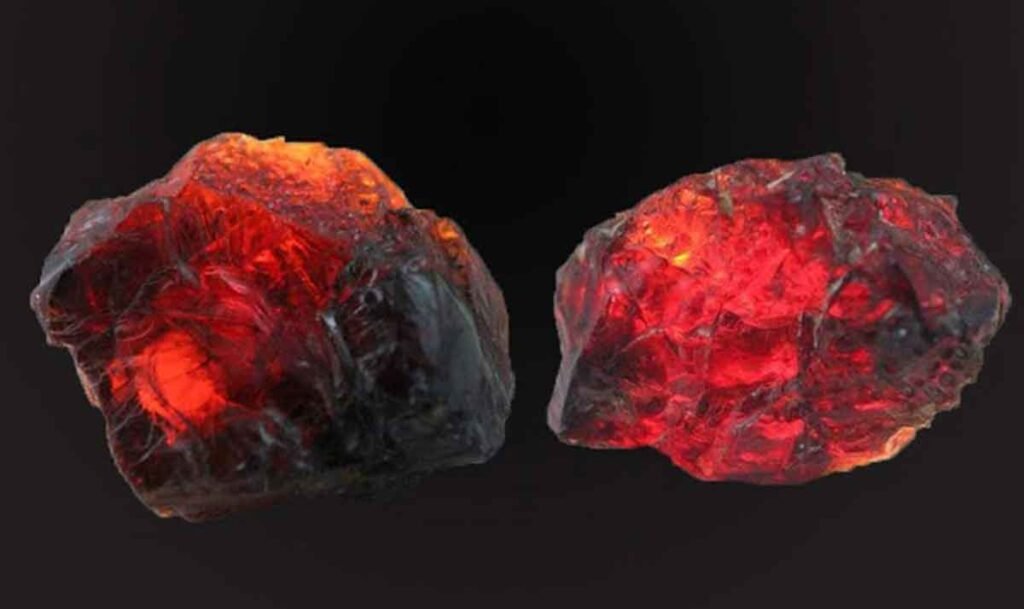
Painite is a mineral containing calcium, zirconium, boron, aluminum, and oxygen. It also contains traces of chromium and vanadium, which are responsible for its orange-red to brownish-red color.
British gemologist Charles Davy Pain discovered painite in 1951 but recognized it as a new gemstone in 1957. It was then considered the world’s rarest gemstone and his find was placed at the British Museum in London.
More were discovered in subsequent years but by 2004, only tw0-dozen painite stones exist. In recent years a mine in Myanmar started producing small quantities of painite, bringing the total known number of stones to 1,000.
This barely made a dent in the stone’s rarity. A çarat of painite now can fetch more than $60,000.
Red Beryl
Red beryl, also known as bixbite, is one of the top red gemstones listed above. This gemstone is so rare that the Utah Geological Survey estimated that only one red beryl is discovered for every 150,000 gem-quality diamonds.
Pure beryl is colorless. Impurities in the rock give it its various colors. For example, chromium and vanadium give beryl an emerald-green; iron makes it look blue or yellow, making an aquamarine or golden beryl, and manganese adds the deep red color of the bixbite.
Red beryl is only found in Utah, New Mexico, and Mexico. Even then, the majority of those found seldom exceed a few millimeters in length—too small to be cut and faceted for jewelry use. Jewelers who are good enough to make use of them usually come up with a less than a carat jewelry piece.
And we’re just about done here. Red gemstones indeed sit with the best of the lot, not just because of their beauty, but also because of their rarity. Hopefully, this post helped you know more about red gemstones and guide you in your journey to purchasing one.
Now, if you’re interested in other colored gemstones, check out our article, “Precious Purple: Precious Gemstones To Include In Your Jewelry Collection.”
